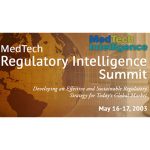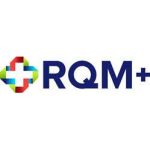Even in today’s eCTD world, most life sciences regulatory teams still think and work in terms of documents, paragraphs and sentences when putting together collateral for marketing authorization and variations submissions. Yet it is data, rather than pre-prepared dossiers, that are moving into central focus now.
Stakeholders across the life sciences and healthcare ecosystem are realizing that a data-first approach to collecting, managing and communicating product information is the most efficient and reliable way to maintain consistent, definitive, current and high-quality record of a product entering or on the market—one that can be interpreted and used in a wide range of use cases, by the broadest possible range of people (from regulators to clinicians, pharmacists and ultimately patients).
Professionals in a range of roles are used to converting their particular information (e.g. about the medicinal product’s clinical properties, chemical composition or information for patients) into narrative form. But are they ready to adopt new, more structured ways of dealing with such information at the source? Or is there an expectation that the regulatory teams will effectively assume the burden of data extraction and data entry assistance for them?
Given that this data-centric approach will soon be the new reality, the question for existing product information managers/regulatory teams is whether their skill sets now need to be refreshed to reflect the target new ways of working.
Early-mover Advantage
With the exception of very large pharma organizations, most companies still lack awareness both of the wider potential of a data-first regulatory world and of the work ahead in building the right capabilities.
At one level, this is about how they manage product information so that (a) it fulfils the demands of new IDMP structured data requirements, and (b) becomes sufficiently reliable to form a foundation for not only product registrations and their maintenance, but all sorts of other processes too.
On another level, the opportunity extends to leveraging reporting and analytics to smart effect. First to help users fill gaps and increase the quality of the data, then with a more strategic emphasis. For example, using AI-assisted tools to investigate scope for process improvement based on insights into how data is currently being managed and where recurring patterns are emerging.
The 3 Pillars of Effective Change: Domain, Tool and Data Capabilities
It can be tempting to imagine that IT is going solve all of this, and that users will be swept along on the journey. Yet failure to adapt internal regulatory capabilities and cultivate new data skills is likely to compromise regulatory affairs’ data-based progress.
Having efficient and user-friendly solutions that have been built with additional data fields to satisfy IDMP, as well as an appreciation for what new data-centric process management models will mean for the pharma industry will be important.
The teams involved will also need help in adapting to the demands of IDMP. They will need guidance, support and help with validation to ensure that the right data is being entered in the right way, and that any gaps or issues are spotted and flagged. Given the huge weight of new responsibility that will be placed on this critical ‘source of product truth,’ it also follows that an additional layer of quality checks will be needed to cement confidence in the new bank of structured data.
As teams look to use this ‘live’ data to build reports, they will need help understanding how to make the most of analytics and of pre-built dashboards, too.
Reporting & Analytics: From Standard Dashboards to AI-assisted Discovery
As basic data interrogation becomes more commonplace and comfortable, teams will need to be able to transition towards more advanced analytics. In the familiar document-centric world, the scope for deep-diving into the incorporated information, and extracting new insights and value from those documents, was minimal. Once the source of that information is structured data, the scope to analyze it using smart tools and distill patterns, trends and scope for process improvement grows sharply.
It is at this point that teams can start to apply AI-assisted tools and interrogate broader sets of structured data to discover subtler inconsistencies, gaps or errors in data that may have slipped through manual reviews and controls. Moreover, teams can start to look at the efficiency of data capture and management processes to see whether alternative approaches (e.g. bulk processes) might be more effective to enhance the availability of good data for all.
Building Out—and Building On—the Right Mindset
For every user with a role to play in shaping the data, this work needs to be as simple and as user-friendly as possible. If users are not brought along on the journey from this earliest point, anything that comes afterwards will be in vain (as the reliability of the data will be compromised from day one). Once teams are comfortable working with data, and are confident in its quality—because they are adept at the process of capturing, enriching and managing it—regulatory operations can start to be more ambitious in their next-level plans.
This may include harnessing AI-enabled tools to interrogate the data and identify areas where entire data-based processes could benefit from a new, streamlined approach.
This is where existing teams are most likely to find that they lack the appropriate skills and will need to bring on board new talent in the form of qualified data discovery professionals. In pharma regulatory operations, data scientists do not currently exist in a widespread capacity. Meanwhile these skills are in short supply on the wider market. Other industries, from finance to telecoms, retail and digital marketing, have already monopolized the best data scientists, or trained their own. So the pharma industry will need to think ahead about how it will source its own data analysts and scientists for the regulatory domain.
Filling Capability Gaps: Collaboration & Skills Transfer
As already noted, regulatory teams will ultimately need access to a holy trinity of domain, tool and data discovery knowledge, but for the reasons just mentioned this optimal combination is likely to prove elusive. This is likely to mean building their software and regulatory domain knowledge and growing data science capabilities more organically through a combination of collaborative team-building and targeted training and skills transfer.
The challenge in building the right balance of skills might feel both vague and insurmountable at this point, but the reality of the need to start building these skills is undeniable.
The best advice is to approach new skills adoption step by step, across a pilot initiative that targets regulatory’s biggest pain points or the most complete source of existing data (e.g. existing product information; or drug registrations process planning and tracking data).
A key factor to success will be visionary leaders who can see the wider potential of a data-driven regulatory ecosystem, and implement plans for exploring this beyond the immediate operational improvement opportunity. Regulatory operations leaders have a responsibility to drive this data-first approach, which will require some targeted external networking and fact-finding to identify where their own awareness or sense of direction may be lacking.
As 2022 gives way to a new year and new possibilities, this is a chance to review the bigger picture and take some strong strides towards the future.







